|
Owyhee Dam Construction Railroad |
|
|
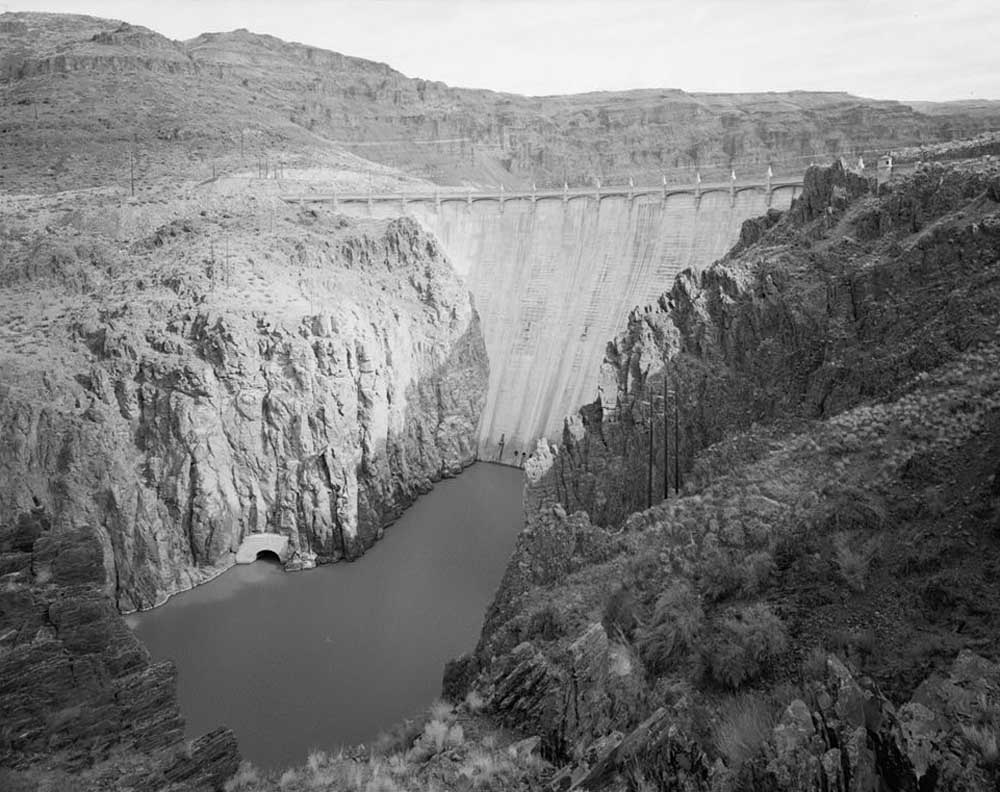 |
|
The completed Owyhee Dam. Bureau of Reclamation photograph. |
|
|
History In 1924, J.B. Bond, the U.S. Bureau of Reclamation's project manager based in Boise, Idaho, drew up initial plans for a massive irrigation project designed to increase water supplies to 46,000 acres of land already in agricultural production and to bring into production an additional 80,000 acres of eastern Oregon and western Idaho scrubland. The project was an enormous undertaking- the centerpiece of the project was Owyhee Dam, to be built on the Owyhee River at a place generally known as "Hole-in- the-Ground". The dam would impound a sizeable reservoir, which together with supplemental water pumped from the Snake River would be fed through nine pumping plants into 172 miles of canals, 543 miles of laterals, and 227 miles of drains. Total estimated project cost stood at $16 million dollars. |
|
|
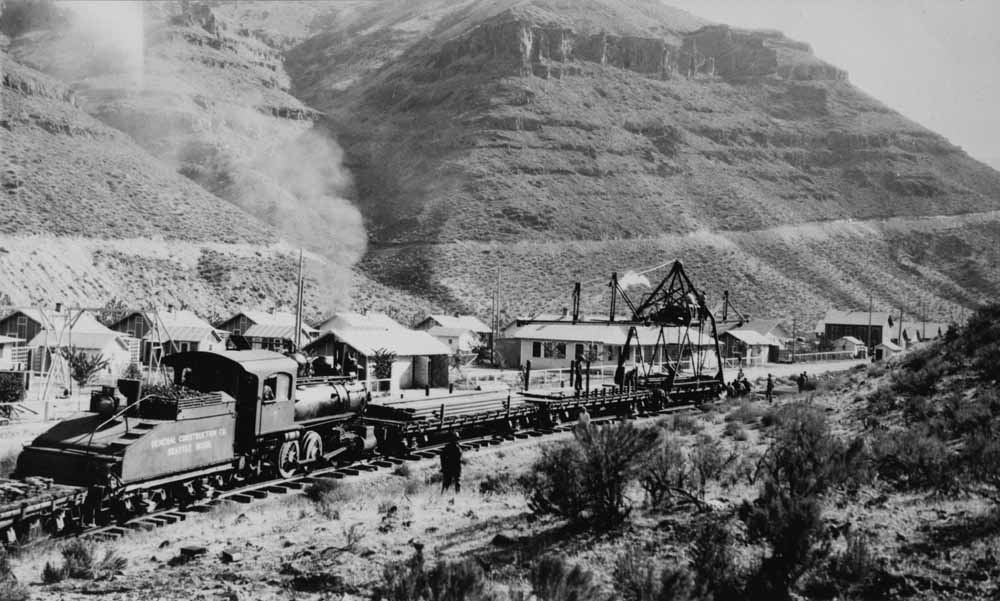 |
|
The construction train laying track into the site of the Owyhee dam construction camp. Bureau of Reclamation photograph. |
|
|
|
Congress authorized the Owyhee Project in August 1927. Baseline work began shortly afterwards. The Bureau of Reclamation awarded the construction contract to the General Construction Company of Seattle, Washington. Other contractors hired either by General of BOR included T.E. Connoly Company, J.F. Shea Company, and S.S. Magoffic Company. The size- 417 feet high- and remote location of the dam indicated the need for a railroad to bring in the required construction materials. In January 1928, General Construction broke ground on a railroad extending from a connection with Union Pacific's Marsing/Homedale branch at Dunaway 24 miles up the Owyhee River to the dam site. Workers drew $4 per day, minus $1.50 deducted for board and lodging. Railroad construction progressed up the Owyhee River canyon, including a tunnel blasted through solid rock. The rails reached the dam site on 24 October 1929. |
|
|
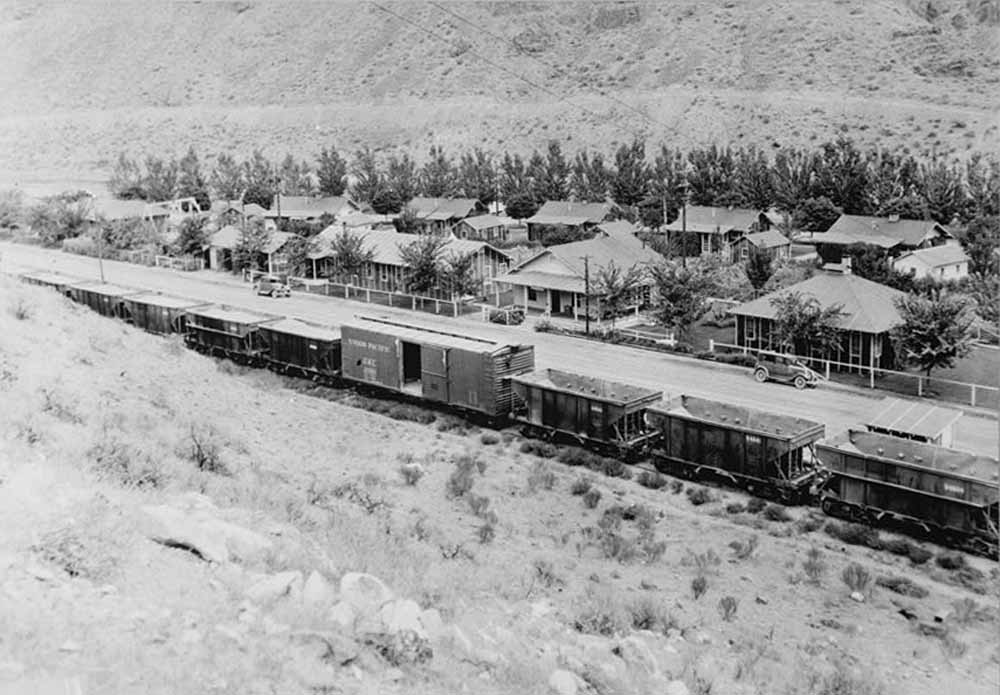 |
|
The Owyhee Dam construction camp. Bureau of Reclamation photograph. |
|
|
|
Work on the dam and the associated infrasturcture progressed quickly after the railroad was completed. The Bureau of Reclamation at the time was in the early planning stages at the time for the much larger Hoover Dam, and the Owyhee Dam project served as a test bed for developing many of the construction practices later employed at Hoover, including inserting cooling coils through sections of concrete in order to prevent cracks and other weaknesses from forming within the concrete as it set. The construction railroad served an integral role in building the dam, being used to transport employees and equipment to and from the project in addition to moving materials around at the dam site. No record of specific equipment used on the construction railroad seem to survive, though pictures do show a large number of hopper cars, several steam locomotives, and at least one self propelled railbus. General Construction and the other contractors also employed around a dozen small Plymouth gas-mechanical locomotives in the various aspects of the project. |
|
|
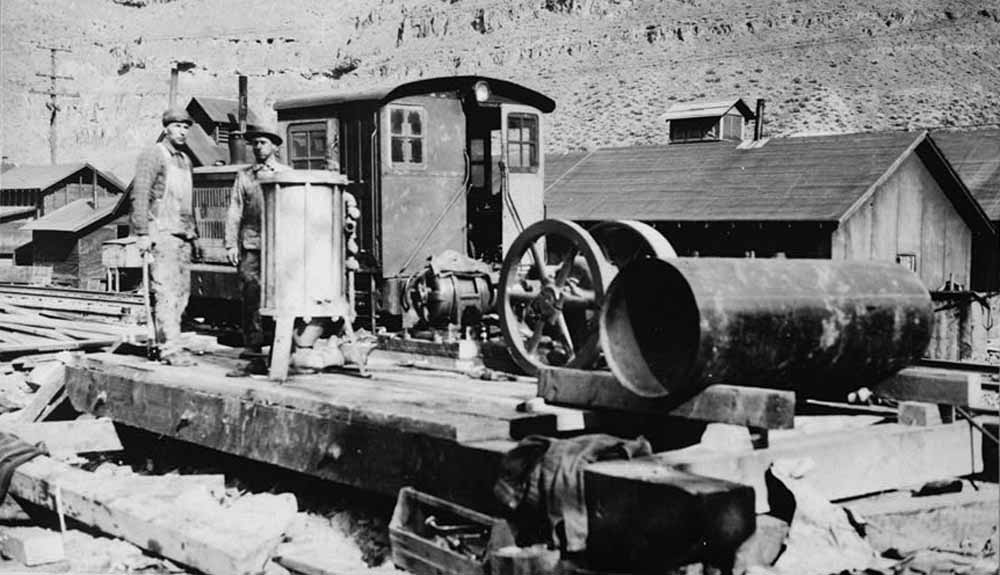 |
|
One of the small Plymouths and some other construction equipment. Bureau of Reclamation photograph. |
|
|
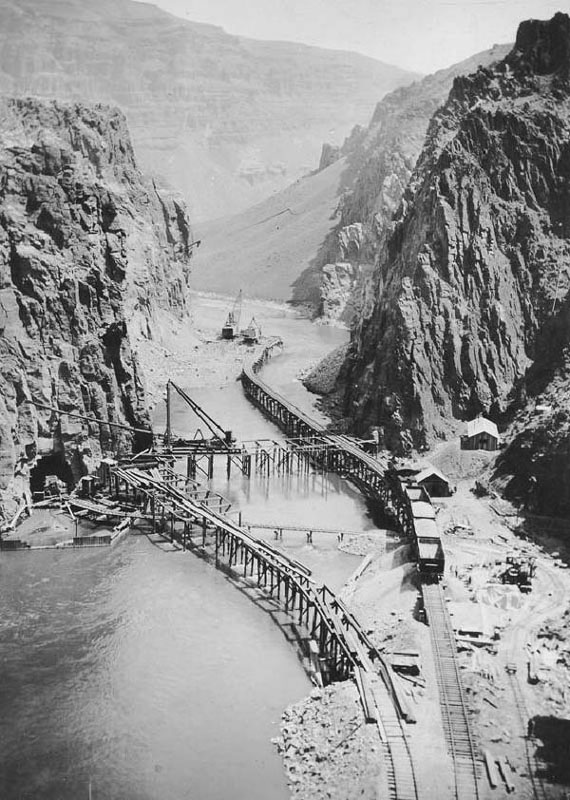 |
|
A construction train at the dam site. Bureau of Reclamation photograph. |
|
|
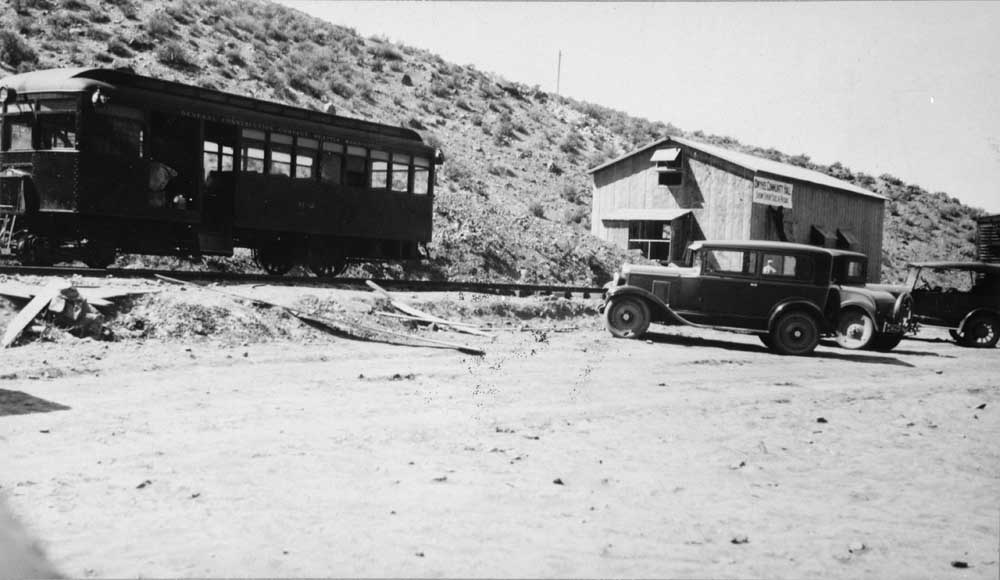 |
|
A railbus somewhere along the line. Bureau of Reclamation photograph. |
|
|
Construction on the dam and associated projects continued unabated through the early years of the Great Depression. A total of 274 employees worked on the project at the height of construction in 1932. General Construction poured the last of the mass concrete on 28 May 1932. The construction railroad had perhaps its finest moment during the dam dedication ceremonies held 17 July 1932- a total of 3,000 people attended, many of them brought to the site on a 15-car passenger special. However, this moment also proved to be the railroad's final hurrah, as the reason for the line's existence vanished with the end of construction. Removal of the railroad likely happened in late 1932 or the early part of 1933. Most of the grade across the agricultural fields has since vanished, though substantial portions of it extending up the Owyhee River canyon now serve as a main access road to the dam, including the tunnel. Owyhee Dam continues its role supporting agriculture in Oregon and Idaho, and the reservoir is a popular recreational area administered by Oregon State Parks. |
|
|
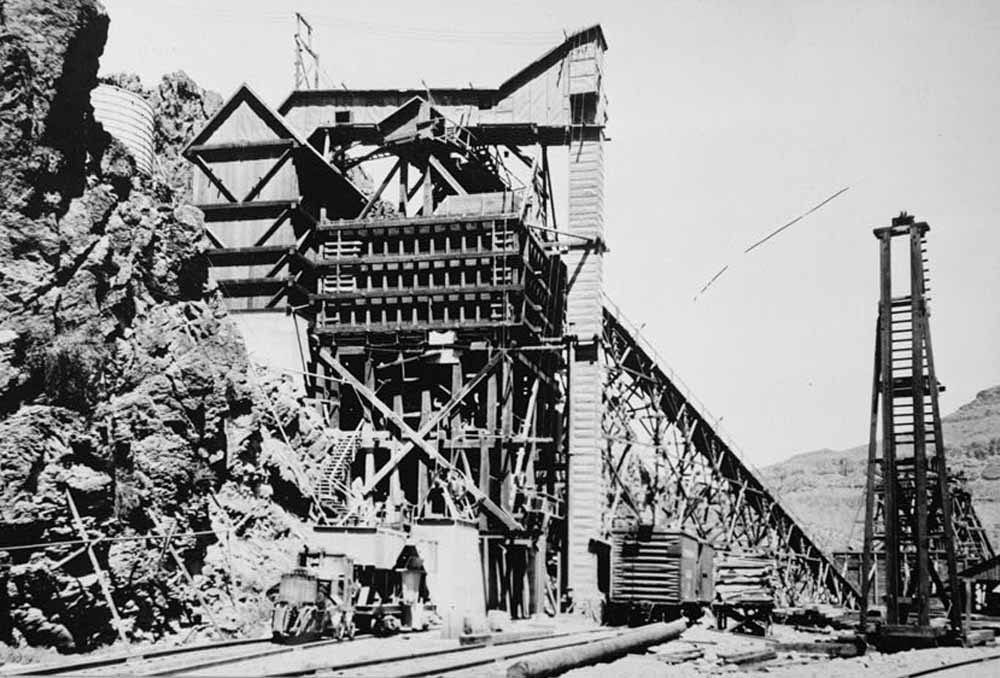 |
|
Another view of construction activities near the dam site. Bureau of Reclamation photograph. |
|
|
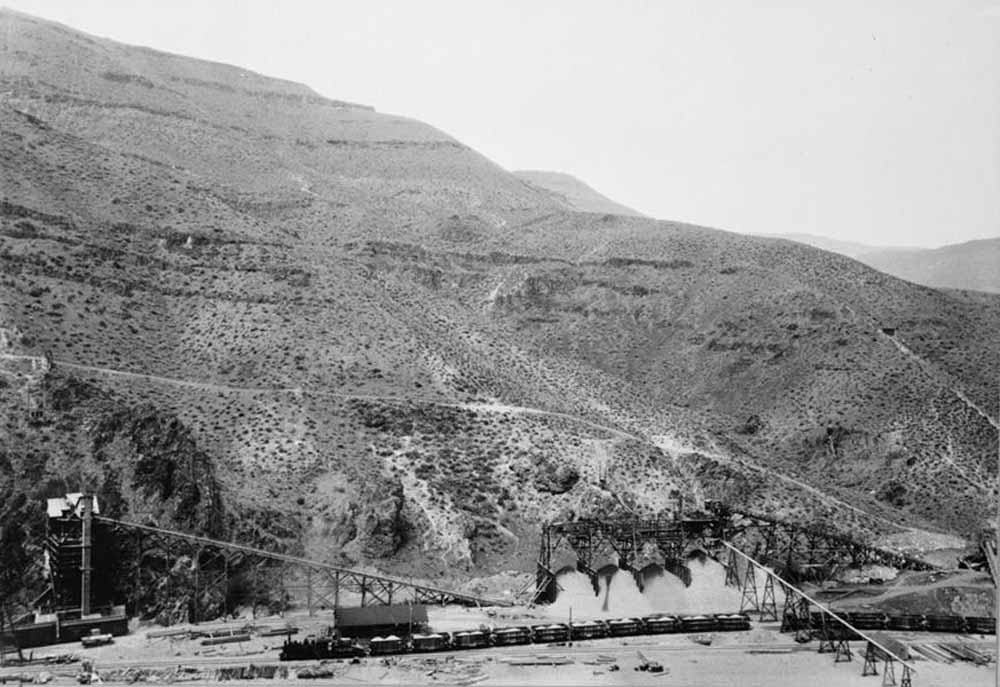 |
|
One last view of the cement operations near the dam site. Bureau of Reclamation photograph. |
|
|
|
Map 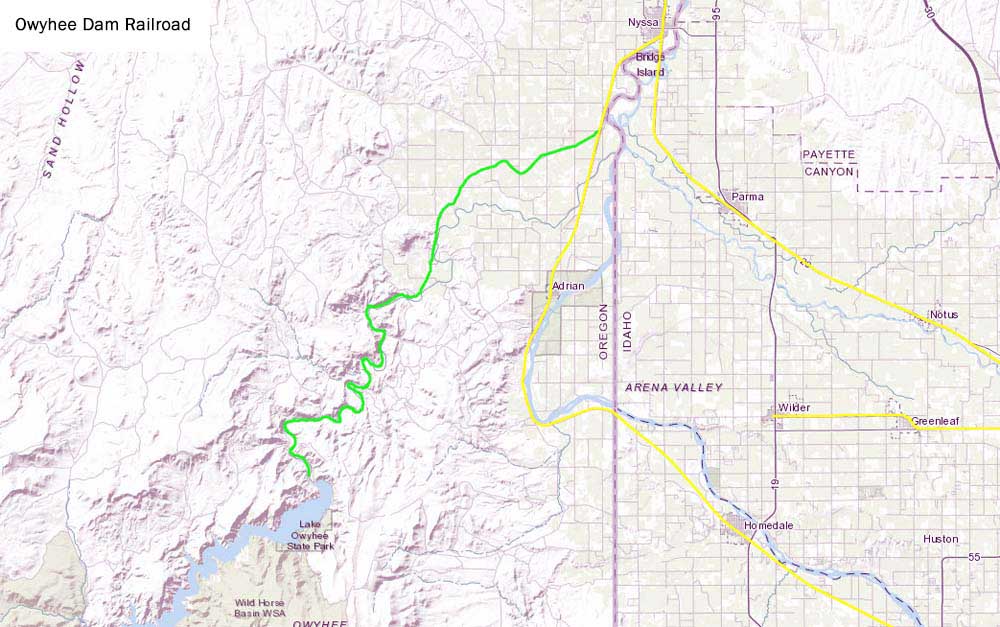 |
|
|
|
List of Plymouths used in Owyhee Project, compiled by John Taubeneck
2922- HLC2, 25 ton, built 6/1928. Originally Guy F. Atkinson, Wallace, California; to General Construction Company #3, Owyhee Dam; to Union Railroad of Oregon #1, Union, Oregon, late 1937/early 1938; to Eldon C. Stutsman Trucking Company, Hills, Iowa, in 1992, where it remains at present. 3206- DLC2, 8 ton, 63 horsepower, built 5/1929. Built for General Construction Company (Owyhee Dam); to Seattle-Tacoma Shipbuilding Company, Tacoma, WA; to General-Shea- Morrison, Ross Dam, Rockport, Washington. 3207- DLC2, 8 ton, 63 horsepower, built 5/1929. Built for General Construction Company (Owyhee Dam). 3563- DLB6, 8 ton, 63 horsepower, built 10/1930. Built for General Construction Company (Owyhee Dam); to U.S. Navy #65-00465, Naval Shipyard, Everett, Washington. 3564- DLB6, 8 ton, 51 horsepower, built 10/1930. Built for General Construction Company (Owyhee Dam). 3714- JLB, 14 ton, 125 horsepower, built 10/1930. Built for General Construction Company (Owyhee Dam). 2307- DL6, 52 horsepower, built 5/1926. Originally Celata Products Company, White Hills, California; to J.F. Shea Company, Dunaway, Oregon. 2324- DL6, 52 horsepower, built 9/1926. Originally Celata Products Company, White Hills, California; to J.F. Shea Company, Dunaway, Oregon. Possibly used on Owyhee Project (all narrow gauge): 3494- FLB2, 5 ton, 35 horsepower, built 6/1930. Originally J.F. Shea Company, Portland, Oregon; returned to Loggers & Contractors Machinery Company (Dealer), Portland, Oregon; to Lee Clay Products Company 5/26/1943. 3495- FLB2, 5 ton, 35 horsepower, built 6/1930. Originally J.F. Shea Company, Portland, Oregon. 3497- DLB6, 8 ton, 63 horsepower, built 6/1930. Originally J.F. Shea Company, Portland, Oregon. 3548- DLB6, 8 ton, 51 horsepower, built 8/1930. Originally J.F. Shea Company, Portland, Oregon. |
|
|
| Photos of the Owyhee Dam Railroad Driving the Grade Today |
|
|
|
More on the Web U.S. Bureau of Reclamation Page on Owyhee Dam Lake Owyhee State Park website |
|
|